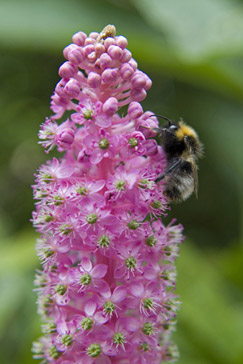
Changes in the way we use small patches of land are adding up to become a potential factor in the decline of the bumblebee and other pollinators, according to the latest study from the Countryside Survey Partnership.
An analysis of the impact of land use found that between 1990 and 2007 the number of wild plant species providing nectar for pollinators decreased by up to 8%, especially in small, semi-natural areas where land management has changed.
The decline was steepest in areas used for horticulture and agriculture, where the survey found one species of nectar-rich plant was lost for every four square metres over the 17-year period.
The report said native wildflowers are being crowded out by more competitive plant species, especially when soil fertility becomes too high or patches of land lie untended. However in larger areas of land where management stays largely unchanged, such as chalk grasslands, hedgerows and road verges, the survey team found the number of nectar-rich species is high and in some cases increasing.





